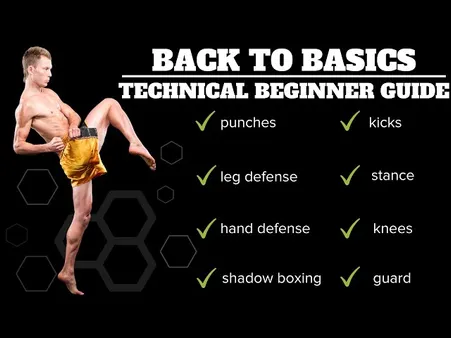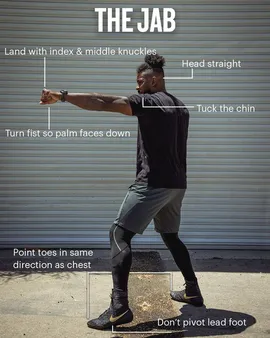Table of Contents
Embark on an exhilarating journey into the world of boxing with Kizworld, your trusted guide to mastering the sweet science. Discover How to get started with boxing as a beginner, whether your goals are fitness, self-defense, or competitive glory. In this comprehensive guide, we'll equip you with the essential knowledge and techniques to step into the ring with confidence. From understanding the basics of boxing to building your skills and staying motivated, we'll be your cornerman every step of the way. Get ready to experience the thrill of boxing and unlock your inner champion.
How to Get Started with Boxing as a Beginner: A Comprehensive Guide
I. Benefits of Boxing for Beginners
Benefits of Boxing for Beginners
Stepping into the world of boxing as a beginner can be an empowering and rewarding experience. Beyond the physical benefits, boxing offers a range of advantages that can positively impact your overall well-being. Let's explore some of the key benefits that make boxing an excellent choice for those looking to improve their fitness, learn self-defense, and embrace a healthier lifestyle.
Improved Cardiovascular Health: Boxing is a high-intensity, full-body workout that elevates your heart rate and improves cardiovascular health. Regular boxing sessions can strengthen your heart, reduce the risk of heart disease, and enhance your overall cardiovascular endurance.
Enhanced Strength and Power: Boxing involves punching, footwork, and defensive maneuvers that engage various muscle groups. It helps build strength in your arms, shoulders, back, and core, while also improving your overall power and explosiveness.
Increased Coordination and Balance: Boxing requires precise footwork, hand-eye coordination, and balance. As you train, you'll develop better coordination, agility, and balance, which can benefit other aspects of your life and reduce the risk of falls.
Stress Relief and Mental Toughness: Boxing provides an excellent outlet for stress relief. The physical exertion and focus required during training can help clear your mind, reduce anxiety, and improve your mental well-being. Additionally, boxing can help build mental toughness, resilience, and self-confidence.
Self-Defense and Empowerment: Learning boxing can equip you with valuable self-defense skills. The techniques and strategies you'll learn can help you protect yourself in potentially dangerous situations and boost your confidence in your ability to handle yourself.
Social Interaction and Community: Joining a boxing gym or club can provide opportunities for social interaction and community. Training alongside others can foster a sense of camaraderie, support, and motivation, making your boxing journey more enjoyable and rewarding.
Weight Management and Body Composition: Boxing is an effective way to burn calories, lose weight, and improve body composition. The combination of cardiovascular exercise and strength training helps you shed excess fat, build lean muscle, and achieve a healthier weight.
Improved Sleep Quality: Regular boxing training can contribute to better sleep quality. The physical exertion and stress relief associated with boxing can help you fall asleep more easily and experience deeper, more restful sleep.
Reduced Risk of Chronic Diseases: Engaging in boxing can help reduce the risk of chronic diseases such as type 2 diabetes, obesity, and certain types of cancer. The combination of physical activity, stress reduction, and improved cardiovascular health contributes to a healthier lifestyle and lower disease risk.
Enhanced Cognitive Function: Boxing involves strategic thinking, quick decision-making, and problem-solving. Regular training can stimulate cognitive function, improve reaction time, and enhance overall brain health.
Fun and Enjoyable Activity: Boxing is an exciting and enjoyable activity that can keep you motivated and engaged in your fitness journey. The dynamic nature of the sport, the challenge of learning new skills, and the camaraderie of the boxing community make it a rewarding and fulfilling experience.
Whether your goal is to improve your fitness, learn self-defense, or simply try something new, boxing offers a multitude of benefits that can positively impact your physical and mental well-being. Embrace the challenge, step into the ring, and discover the transformative power of boxing.
II. Essential Gear for Getting Started
Essential Gear for Getting Started
Before you step into the ring, make sure you have the right gear to ensure your safety and comfort. Here's a list of essential items you'll need:
- Boxing Gloves: Choose gloves that fit snugly and provide adequate padding for your hands. Consider the weight and material based on your experience and preference.
- Hand Wraps: Protect your hands and wrists by wrapping them with gauze or elastic wraps before putting on your gloves.
- Headgear: A protective headgear is crucial to shield your head from punches and prevent injuries.
- Mouthguard: A mouthguard protects your teeth and gums from impact and helps prevent injuries to your jaw.
- Groin Protector: For male boxers, a groin protector is essential to safeguard this sensitive area.
- Athletic Shoes: Choose shoes that provide good ankle support and traction for quick movements and pivoting.
- Comfortable Clothing: Wear loose-fitting, breathable clothing that allows for easy movement and doesn't restrict your range of motion.
Remember, investing in quality gear can make a significant difference in your boxing experience and help you stay safe while training and competing.
In addition to the essential gear listed above, there are a few optional items that can enhance your boxing experience:
- Jump Rope: A jump rope is a great tool for improving your footwork, coordination, and cardiovascular endurance.
- Speed Bag: A speed bag helps you develop hand-eye coordination, timing, and punching speed.
- Heavy Bag: A heavy bag is used for practicing power punches and improving your overall punching technique.
- Training Bag Gloves: These gloves are specifically designed for heavy bag workouts and provide extra padding and support for your hands.
- Punching Mitts: Punching mitts are held by a partner while you practice your punches, allowing you to work on your technique and accuracy.
These optional items can be beneficial for boxers of all levels, but they are not essential for beginners. As you progress in your training, you can consider adding these items to your boxing gear collection.
Whether you're a beginner or an experienced boxer, having the right gear is crucial for your safety and performance. Make sure to choose high-quality equipment that fits properly and provides adequate protection. With the right gear, you can step into the ring with confidence and focus on improving your skills and achieving your boxing goals.
To learn more about the benefits of boxing and how to get started, check out our related posts on How to Learn Boxing for Self-Defense and Fitness and The Benefits of Boxing for Physical and Mental Health.
III. Fundamental Boxing Techniques
Fundamental Boxing Techniques
Mastering the fundamental techniques of boxing is essential for beginners looking to build a solid foundation in the sport. These techniques include proper stance, footwork, punches, and defense. Each element plays a crucial role in developing a well-rounded boxing skill set.
Stance: The boxing stance is the position from which a boxer operates. It provides stability, balance, and the ability to move quickly in any direction. The basic stance involves standing with your feet shoulder-width apart, knees slightly bent, and your weight evenly distributed on both feet. Your hands should be held up in front of your face, with your elbows tucked in and your chin tucked down.
Footwork: Footwork is the art of moving around the ring effectively. It allows you to control the distance between you and your opponent, create angles for attack, and avoid getting hit. Basic footwork includes the jab step, the cross step, and the pivot. The jab step is a quick forward movement with your lead foot, followed by a quick return to your original stance. The cross step is a lateral movement with your lead foot, followed by a step with your rear foot to bring you closer to your opponent. The pivot is a rotation of your body on the balls of your feet, allowing you to change direction quickly.
Punches: Punches are the primary weapons in boxing. There are four main types of punches: the jab, the cross, the hook, and the uppercut. The jab is a quick, straight punch thrown with your lead hand. The cross is a powerful, straight punch thrown with your rear hand. The hook is a short, looping punch thrown with your lead hand. The uppercut is a short, upward punch thrown with your rear hand.
Defense: Defense is just as important as offense in boxing. It involves using your body and your gloves to block or evade your opponent's punches. Basic defensive techniques include the block, the parry, and the slip. The block is a simple movement of your glove to intercept your opponent's punch. The parry is a quick, outward movement of your glove to deflect your opponent's punch. The slip is a movement of your head or body to avoid your opponent's punch.
By mastering these fundamental techniques, beginners can lay the foundation for a successful boxing career. With consistent practice and dedication, they can develop the skills and confidence needed to compete in the ring.
Technique | Description |
Stance | Standing with your feet shoulder-width apart, knees slightly bent, and your weight evenly distributed on both feet. |
Footwork | The art of moving around the ring effectively to control distance, create angles for attack, and avoid getting hit. |
Punches | The four main types of punches are the jab, the cross, the hook, and the uppercut. |
Defense | Using your body and your gloves to block or evade your opponent's punches. |
Related Posts:
- How to Choose the Right Boxing Gym
- What to Expect in Your First Boxing Class
- The Benefits of Boxing for Fitness and Self-Defense
IV. Finding the Right Gym or Class
Finding the Right Gym or Class
Choosing the Right Gym or Class
- Factors to consider when selecting a boxing gym or class:
- Location and convenience
- Cost and membership options
- Class schedule and availability
- Certifications and experience of the trainers
Research and Reviews
Conduct online research and read reviews to learn more about potential gyms or classes. Look for feedback on the quality of instruction, the atmosphere of the gym, and the overall experience of other members.
Learn how to begin learning boxing.
Trial Classes or Visits
If possible, attend a trial class or visit the gym before making a decision. This will allow you to experience the training firsthand, meet the trainers, and get a sense of the gym's culture.
Choose the proper boxing gear before the first class.
Ask for Recommendations
Talk to friends, family, or colleagues who have boxing experience. They may be able to provide valuable recommendations or share their experiences at certain gyms or classes.
Learn about the mental and physical advantages gained from boxing.
Personal Preferences
Consider your personal preferences, such as your learning style, preferred training environment, and the type of boxing you're interested in (e.g., recreational, competitive, or fitness-focused). Choose a gym or class that aligns with your goals and needs.
V. Conclusion
As you continue your boxing journey, remember that progress and improvement take time. Stay patient, stay dedicated, and keep pushing yourself to new heights. Embrace the challenges, learn from your mistakes, and never give up on your goals. With hard work, perseverance, and the right mindset, you'll not only become a better boxer but also a stronger, more confident, and more resilient individual. So step into the ring with determination, embrace the sweet science, and let boxing transform your life for the better.